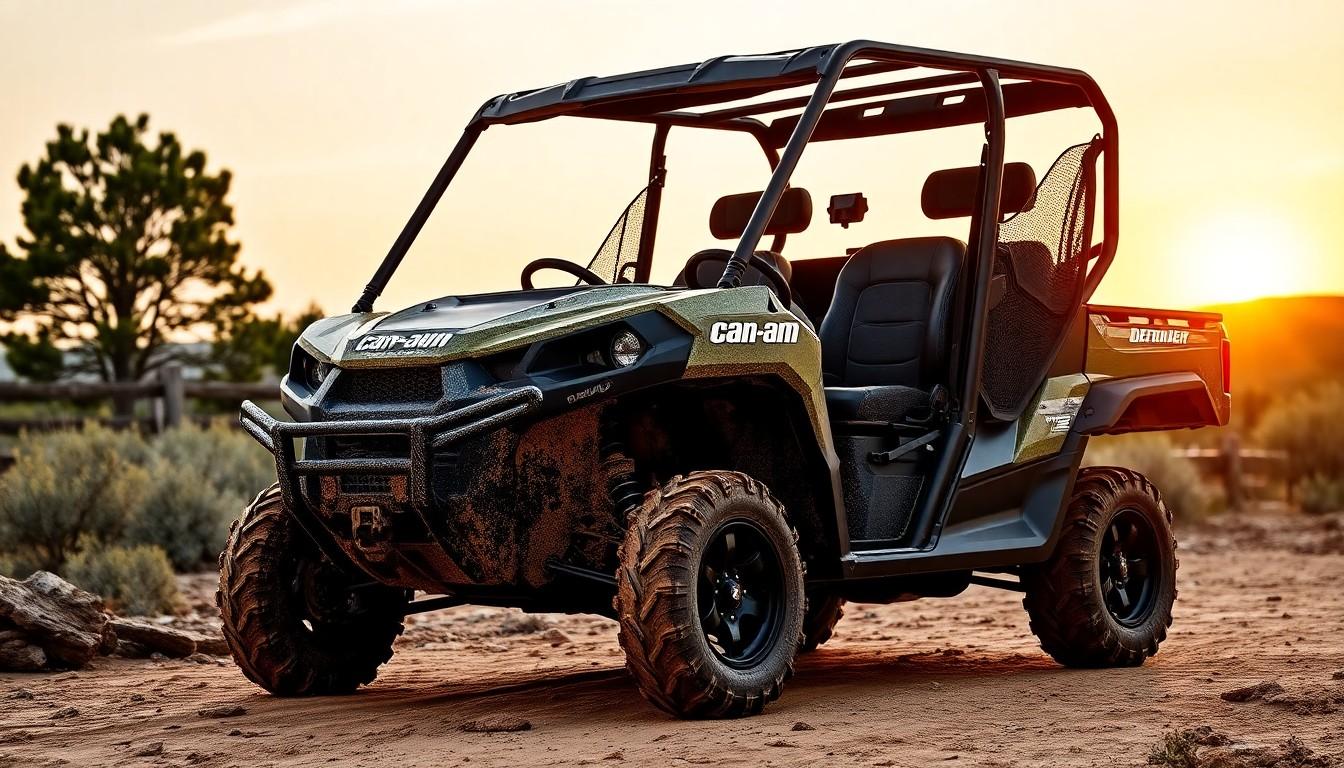Experiencing trouble with your Can-Am Defender HD10? You’re not alone. While this powerhouse UTV promises exceptional performance and reliability for work and recreation, some owners have encountered frustrating issues that can turn adventure into aggravation.
We’ve compiled a comprehensive analysis of the most common Can-Am Defender HD10 problems based on owner reports, mechanic insights, and manufacturer data. From transmission hiccups to overheating concerns, understanding these potential issues before they arise can save you time, money, and headaches. Whether you’re a current owner or considering a purchase, knowing what might go wrong helps you make informed decisions about this popular side-by-side.
Common Can-Am Defender HD10 Problems: An Overview
The Can-Am Defender HD10 experiences several recurring issues even though its reputation for durability and performance. Many owners report transmission problems, particularly with CVT belts wearing prematurely or breaking unexpectedly during normal use. Engine overheating is another frequent complaint, especially when operating in high-temperature environments or under heavy loads. Electrical system failures affect many units, with dashboard displays going blank or providing incorrect readings.
Suspension components often wear out earlier than expected, with some owners noting problems after just 1,000-2,000 miles of use. Fuel system complications, including fuel pump failures and clogged injectors, create starting difficulties and performance issues for many HD10 operators. Four-wheel-drive engagement problems leave some riders stranded when they need traction most, typically occurring after extended use in challenging terrain.
The cooling system’s radiator frequently gets clogged with debris, reducing cooling efficiency and contributing to overheating episodes. Steering components develop excessive play or stiffness in many units, particularly those used in rough terrain applications. Brake system failures, including premature pad wear and reduced stopping power, concern riders who use their vehicles for heavy-duty applications.
These issues vary in severity and frequency across different model years, with some being more prominent in earlier HD10 models and others persisting across multiple production cycles.
Engine Issues and Overheating Concerns

The Can-Am Defender HD10 exhibits several engine-related problems that owners frequently encounter. Fuel delivery complications stand out as particularly troublesome, especially during cold weather operation when the UTV may struggle to start or maintain consistent performance.
Engine Knocking and Misfiring
Engine performance issues in the Defender HD10 often manifest as misfiring, particularly during cold starts or under heavy loads. While extensive documentation on exact knocking problems isn’t widely available, these symptoms typically trace back to fuel delivery complications. Clogged fuel filters contribute significantly to these issues, preventing proper fuel flow to the engine and resulting in inconsistent combustion. Regular maintenance including fuel filter replacements and system flushes helps minimize these concerns for many owners. Fuel quality also plays a critical role in preventing misfires, with contaminated or old fuel often creating combustion irregularities that mimic more serious mechanical problems.
Cooling System Failures
Cooling system problems represent another area of concern for Defender HD10 owners. Though direct documentation of cooling system failures appears limited, preventative maintenance remains essential for avoiding potentially expensive repairs. Regular coolant level checks and inspections for leaks help maintain proper engine temperature regulation. Some owners report air conditioning system complications, including oil leaks from condenser fittings and low freon levels, which might indicate broader cooling system vulnerability. These issues can compound during hot weather operation or when the vehicle handles heavy workloads for extended periods. The belt drive system, while not directly part of the cooling mechanism, can also affect engine temperature when failing, creating additional strain on the cooling components during operation.
Transmission and Drivetrain Problems
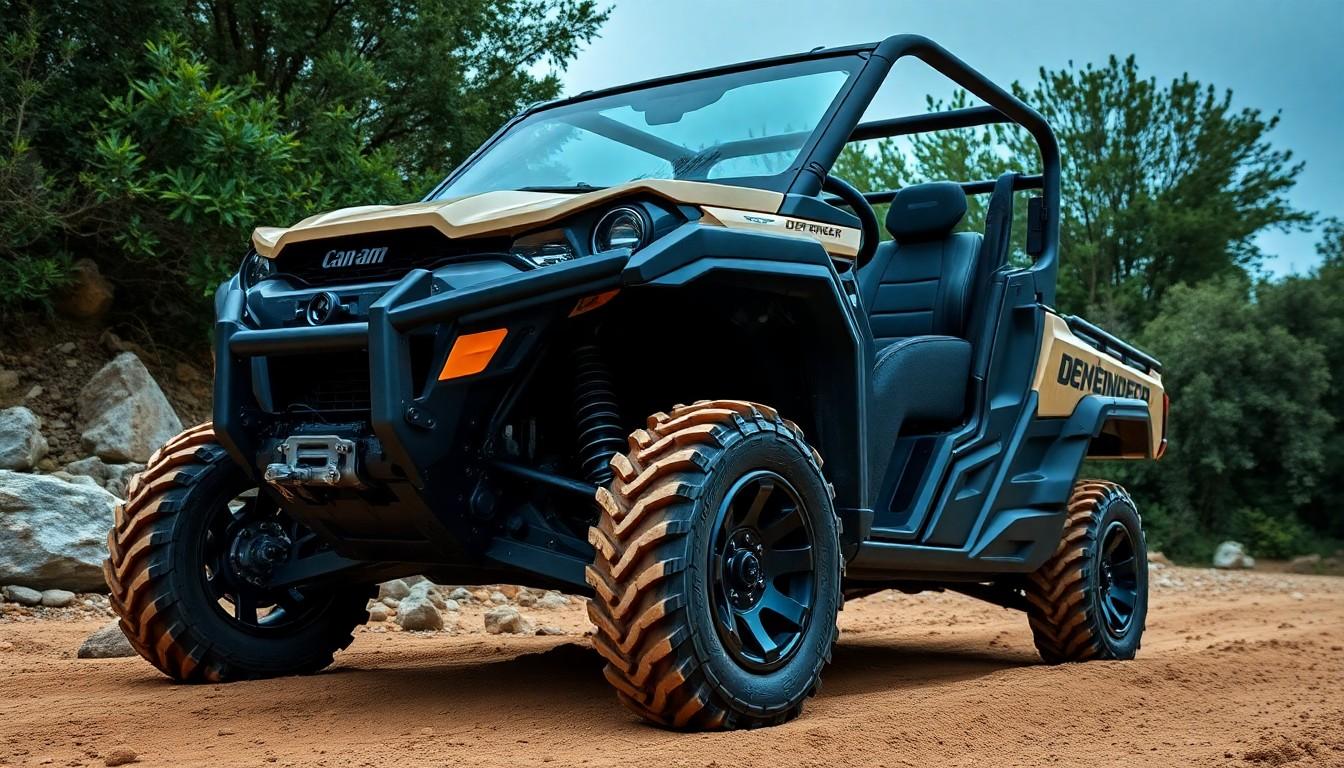
The Can-Am Defender HD10’s transmission and drivetrain systems present several persistent issues that owners frequently encounter. Hard shifting and broken shift linkages stem primarily from poor design in the shift mechanism. Many users report difficulty captivating gears smoothly, especially after extended use in challenging terrain.
Belt Failures and Wear
Belt drive failures rank among the most common problems affecting Can-Am Defender HD10 models. The continuous variable transmission (CVT) belt often fails prematurely due to excessive load, improper maintenance, or operation in harsh environments. Signs of belt wear include unusual noises during acceleration, decreased power delivery, and visible fraying on the belt surface. Regular inspection of the belt condition helps prevent unexpected breakdowns during critical operations. Owners operating in dusty conditions face accelerated belt wear, as particulates can infiltrate the CVT housing and cause abrasive damage to the belt material.
Transmission Slipping Issues
Transmission slipping frequently occurs in the Defender HD10, typically related to issues within the CVT system. This problem manifests as inconsistent power delivery, unexpected RPM spikes without corresponding speed increases, and difficulty maintaining constant velocity on inclines. The primary causes include worn-out belts, damaged clutch components, or improper clutch calibration. The Visco-Lok system, while designed to improve traction, contributes to differential wear over time, compounding transmission problems. Owners also encounter reverse chain problems, particularly when using oversized tires or reversing under heavy loads. Building up RPMs gradually in reverse gear rather than applying sudden acceleration helps minimize stress on these components.
Electrical System Failures

The Can-Am Defender HD10’s electrical system presents several recurring issues that owners frequently encounter. These problems range from switch malfunctions to alternator failures, often leaving riders stranded or dealing with unpredictable performance.
Battery Drain and Starting Problems
Battery drain plagues many Defender HD10 owners, typically stemming from alternator failures that prevent proper battery charging. The alternator sometimes stops delivering power altogether, resulting in a completely dead battery that requires jump-starting or replacement. Cold weather exacerbates starting difficulties, with many users reporting their vehicles won’t start in lower temperatures. Fuel delivery complications contribute to these starting issues, particularly clogged fuel filters that restrict proper flow. Regular battery testing reveals these problems early, as voltage readings below 12.6V when the engine is off indicate potential charging system failures.
Dashboard and Gauge Malfunctions
Electrical gremlins often manifest in dashboard and gauge irregularities throughout the Defender HD10. Switches and connectors behind the dash panels collect dirt and moisture, leading to erratic gauge readings or complete failure. Multiple owners report intermittent speedometer function, temperature gauge inaccuracies, and fuel level sensors that display incorrect readings. These issues connect directly to the broader electrical system problems, as corroded connectors affect signal transmission to the dashboard components. Applying electrical grease to connections serves as a preventative measure, protecting these vulnerable points from moisture and contamination that accelerate failure. The interconnected nature of the Defender’s electrical system means that addressing these dashboard issues often requires comprehensive electrical system inspection.
Suspension and Steering Complications
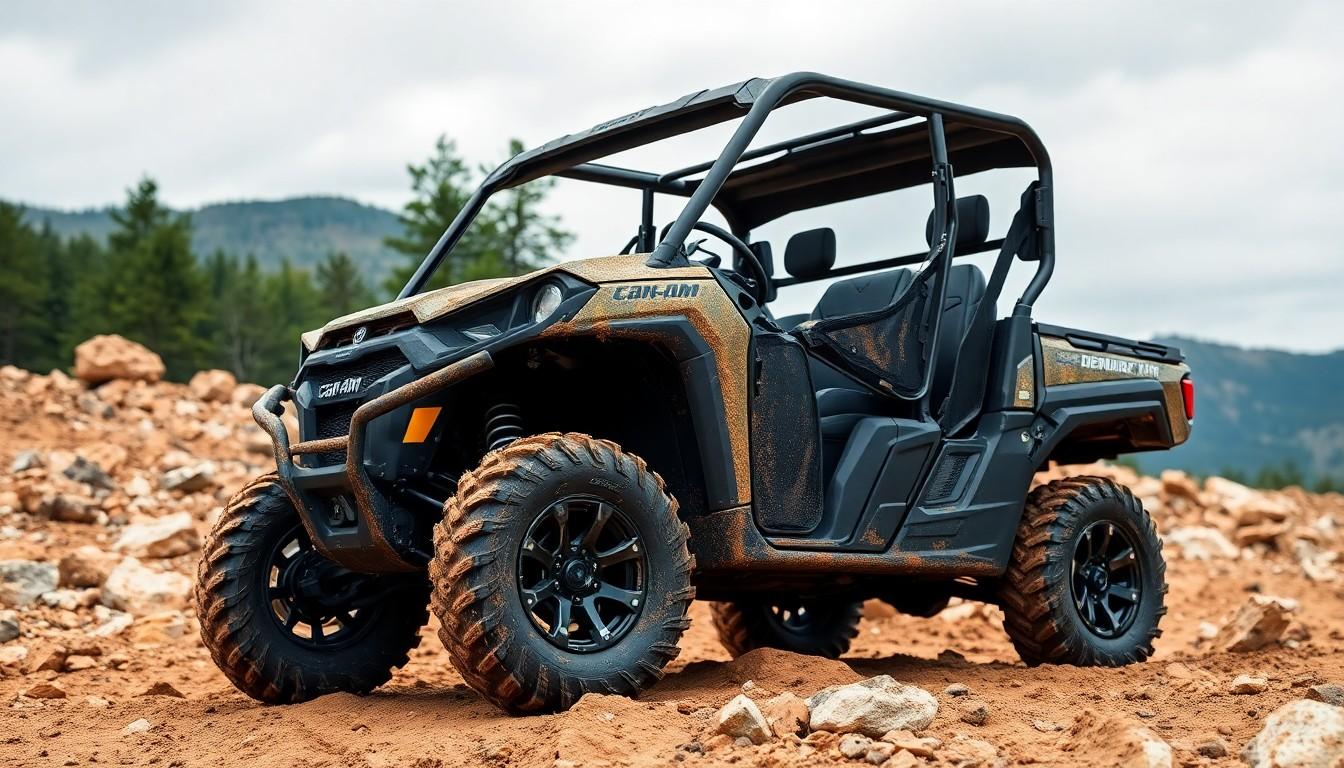
The Can-Am Defender HD10’s suspension system presents several challenges that impact both ride quality and vehicle control. Many owners experience important performance disparities between farm work and more demanding off-road terrain, affecting overall satisfaction with the vehicle.
Differential Failures
The Visco-Lok system in the Defender HD10 frequently causes premature differential wear. Designed to enhance four-wheel traction capabilities, this system actually contributes to increased stress on differential components, especially under extreme operating conditions. Regular inspection of differential fluid and components can reveal early signs of deterioration, including unusual noises and hesitation during engagement. Many owners report complete differential failure after extended use in challenging terrain, resulting in costly repairs and unexpected downtime.
Power Steering Problems
Power steering complications often manifest through inconsistent resistance and control difficulties in the Defender HD10. Though not as widely documented as other issues, these steering problems typically emerge alongside related mechanical failures. Hard shifting and broken shift linkages directly impact steering performance by creating unpredictable handling characteristics and reduced driver confidence. Owners commonly experience increased steering effort at low speeds and steering wheel vibration when traversing rough terrain. These symptoms typically worsen over time, eventually requiring professional intervention to restore proper functionality and safe operation.
Maintenance Costs and Parts Availability
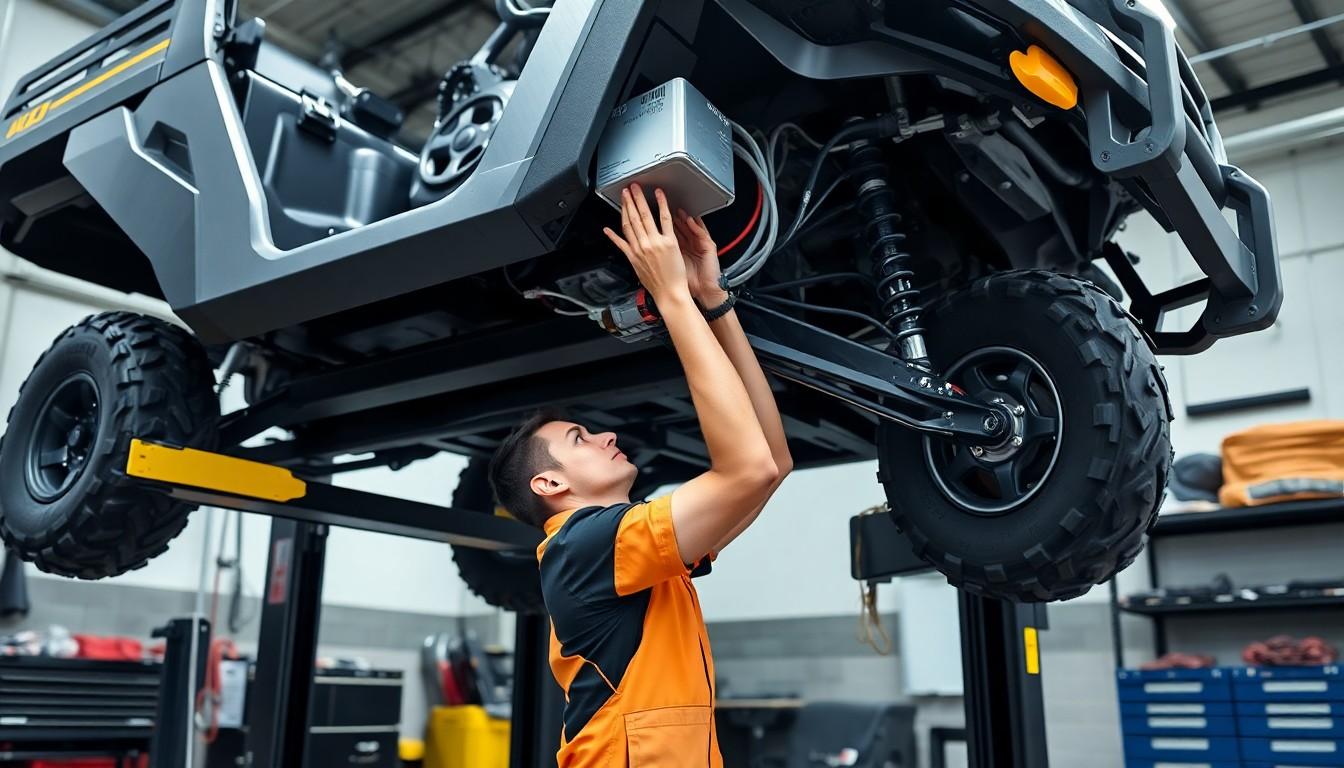
Regular Maintenance Expenses
Regular maintenance plays a critical role in preventing many common Can-Am Defender HD10 issues. Owners typically spend on routine fuel filter replacements, fuel system flushes, and electrical connector maintenance to avoid corrosion. These preventative measures help mitigate cold start problems and electrical failures that plague many Defender models. Cleaning switches and applying electrical grease to connectors represents an inexpensive maintenance task that prevents costly A/C system failures down the road.
Cost of Addressing Common Problems
Alternator and battery problems constitute important expenses for many Defender HD10 owners. When the alternator fails to charge the battery properly, owners face not only replacement costs but also potential towing expenses if stranded. Brake system maintenance costs accumulate quickly, especially for those who use their vehicle for heavy-duty applications where weak brakes and grinding noises indicate frequent component replacement needs. Suspension upgrades often become necessary for owners who regularly tackle off-road terrain, as the factory suspension performs adequately only for farm work and basic property maintenance.
OEM vs. Aftermarket Parts
Parts availability for the Defender HD10 remains strong across both OEM and aftermarket channels. Authorized Can-Am dealerships stock original equipment parts that maintain factory specifications but typically cost more than alternatives. Aftermarket suppliers like Star Knight MT provide cost-effective options that sometimes offer improvements over original components. Many experienced owners opt for aftermarket modifications to enhance reliability and performance, particularly for suspension components and brake systems that commonly require upgrades.
Finding Parts and Service
Online retailers have expanded access to Defender HD10 parts, creating competitive pricing for common replacement items. Service manuals and DIY repair guides have become readily available, enabling owners to perform basic maintenance tasks without dealer assistance. Parts for older model years remain accessible through various channels, though certain specialized components occasionally face supply constraints. Experienced mechanics familiar with Can-Am vehicles can often recommend the most cost-effective repair answers that balance quality and price.
Reliability Comparison With Competitors
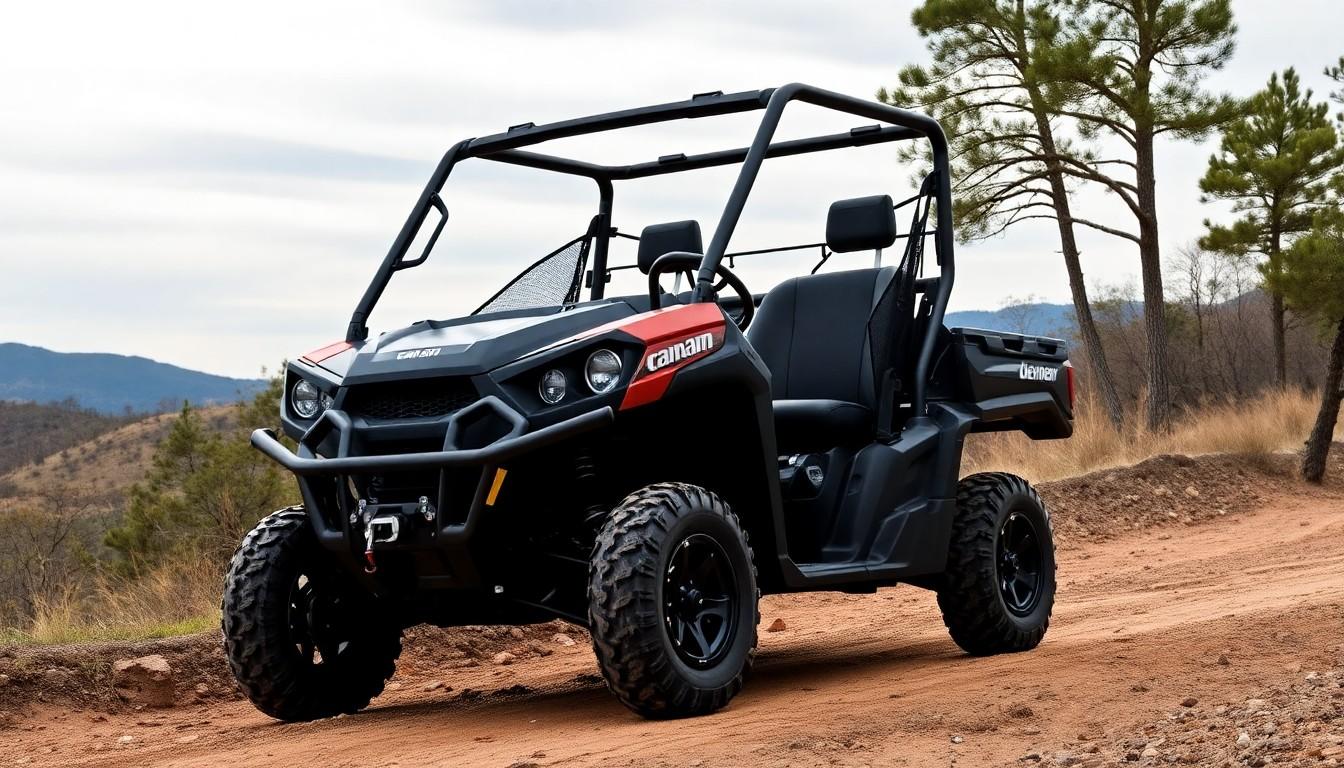
The Can-Am Defender HD10’s reliability stands in contrast to several key competitors in the UTV market. When comparing performance and durability metrics, other manufacturers offer alternatives with different reliability profiles.
Polaris Ranger
Polaris Ranger models feature more robust transmission systems compared to the Defender HD10. Rangers experience fewer alternator and battery failures, addressing one of the Defender’s most frustrating issues. Even though these advantages, Polaris vehicles aren’t without flaws, as they typically encounter Electronic Power Steering (EPS) system complications and occasional electrical gremlins that require attention.
John Deere Gator
John Deere Gator UTVs earn praise for exceptional longevity and mechanical dependability, with significantly fewer reports of major system failures than the Defender. Their reputation for reliability stems from simpler engineering and proven component designs. Gator models trade some performance capabilities and advanced features for this enhanced reliability, making them less appealing to riders seeking cutting-edge technology but more attractive to those prioritizing dependable operation.
Honda Pioneer
Honda Pioneer models demonstrate superior engine and transmission reliability compared to the Defender HD10. Electrical systems in Pioneer models rarely exhibit the alternator-related problems that plague some Defender units. Honda’s engineering reputation translates into fewer warranty claims, though their Dual Clutch Transmission (DCT) system occasionally presents its own set of challenges that require professional intervention.
Each UTV brand comes with distinct advantages and drawbacks about reliability. The Defender HD10’s performance capabilities often overshadow its reliability concerns for many owners. Regular maintenance schedules and appropriate aftermarket upgrades can significantly improve the Defender’s reliability metrics, though competing models from Honda and John Deere continue to outperform it in overall durability assessments based on owner reports.
Manufacturer Recalls and Technical Service Bulletins
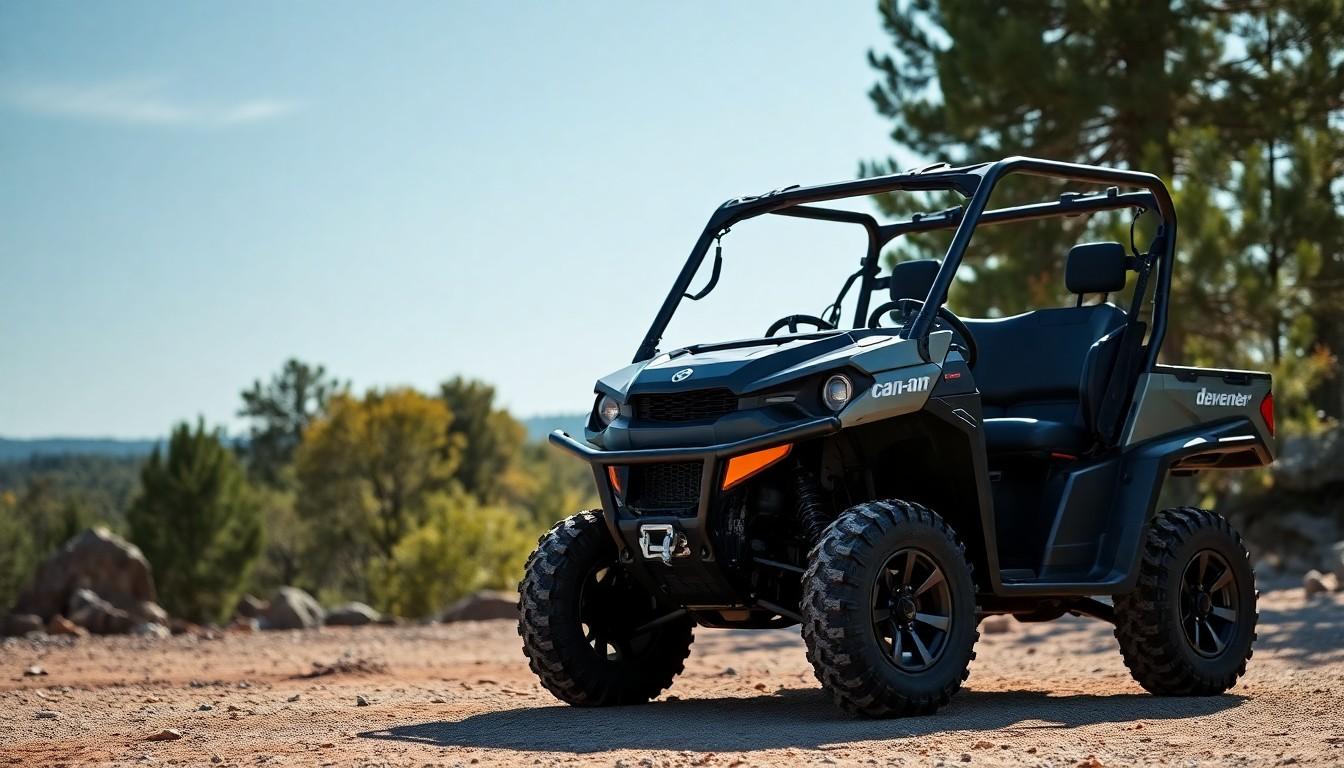
While our research into the Can-Am Defender HD10 reveals many owner-reported issues, exact manufacturer recalls and Technical Service Bulletins (TSBs) aren’t comprehensively documented in available sources. BRP, the parent company of Can-Am, occasionally issues TSBs to address emerging patterns of mechanical or safety concerns, though these communications primarily target authorized dealers rather than consumers directly.
Owners seeking information about potential recalls should check the National Highway Traffic Safety Administration (NHTSA) database or contact their local Can-Am dealer with their vehicle identification number (VIN) for the most current information. The absence of documented widespread recalls doesn’t diminish the importance of addressing the commonly reported problems that affect many Defender HD10 units.
Many issues that might typically warrant TSBs include the persistent brake system problems causing squealing and grinding noises at low speeds. The fuel delivery cold start complications and air conditioning system failures, particularly oil leaks from condenser fittings and low freon levels, represent additional concerns that manufacturers sometimes address through service bulletins.
Door seal inadequacies and windshield rattling over rough terrain continue to frustrate owners without formal manufacturer acknowledgment through recalls or TSBs. Similarly, seat belt twisting issues in the B-pillar mount create daily inconveniences that impact user experience but haven’t triggered official manufacturer actions.
The Visco-Lok system’s contribution to differential wear represents another important concern that hasn’t received formal manufacturer attention through documented recalls or bulletins. Regular maintenance remains the primary defense against these issues in the absence of manufacturer-initiated repair programs.
Solutions and Preventative Maintenance Tips
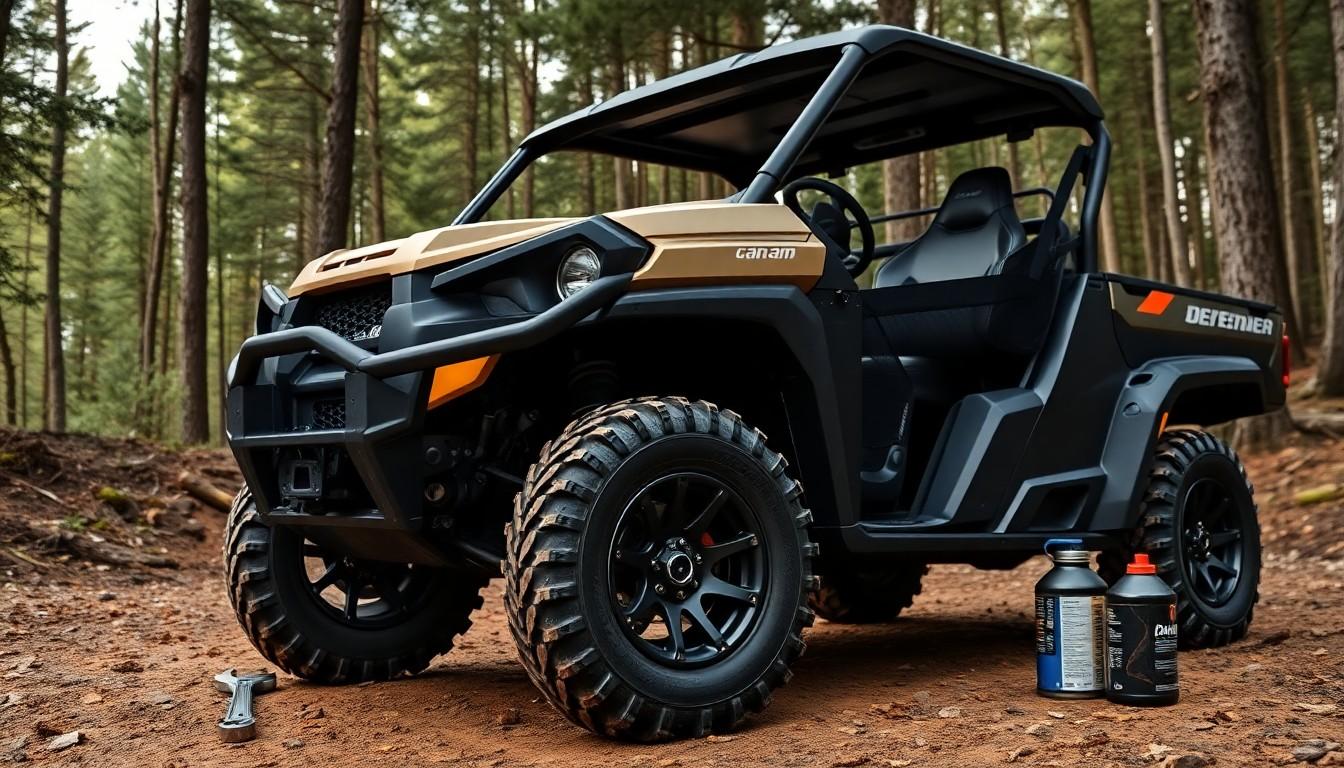
Regular Maintenance Schedule
Regular maintenance prevents many common Can-Am Defender HD10 problems before they start. Replacing fuel filters every 100 operating hours eliminates most cold start and fuel delivery issues. Fuel system flushes twice annually clear contamination that causes engine misfiring or poor performance. Brake system inspections at 50-hour intervals help catch deteriorating brake pads before they create the persistent squealing and grinding noises many owners report.
Cooling System Care
Cooling system maintenance addresses overheating concerns that plague many Defender HD10 units. Checking coolant levels weekly and inspecting hoses for cracks or leaks prevents costly radiator damage. Cleaning the radiator fins monthly removes debris buildup that restricts airflow and leads to overheating. A/C system inspections by qualified technicians identify issues like oil leaks from condenser fittings and low freon levels before complete system failure occurs.
Electrical System Protection
Electrical problems often leave riders stranded but can be prevented through simple measures. Testing the alternator’s charging output quarterly helps identify potential failures before they drain the battery. Applying dielectric grease to electrical connections protects against moisture intrusion and prevents corroded connectors. Battery terminal cleaning and tightening monthly removes power-robbing corrosion that contributes to starting difficulties.
Transmission and Drivetrain Preservation
CVT belt longevity improves dramatically with proper care. Inspecting belts for cracks, glazing, or fraying after 25 hours of operation identifies replacement needs before catastrophic failure. Proper break-in procedures for new belts extend their service life significantly. Differential maintenance, particularly for the Visco-Lok system, requires fluid changes every 100 operating hours to minimize premature wear and expensive repairs.
Suspension and Steering Attention
Suspension components need regular inspection and lubrication to maintain performance. Greasing all suspension pivot points every 50 hours prevents premature bushing wear and squeaking. Power steering system fluid checks monthly help identify leaks before they cause inconsistent steering resistance. Tire pressure adjustments based on terrain conditions reduce uneven wear on steering components and improve overall handling.
Door and Windshield Adjustments
Door seal issues and windshield rattles diminish riding comfort but respond well to simple fixes. Adjusting door latches and applying silicone lubricant to door seals eliminates the improper sealing many owners experience. Tightening windshield mounting hardware and installing anti-rattle strips addresses the squeaking and movement that occurs during operation. These minor adjustments significantly improve cabin comfort during extended rides.
Conclusion
The Can-Am Defender HD10 delivers impressive performance but owners should be prepared for potential challenges with its transmission CVT belts electrical systems and cooling components. While these issues might seem concerning they’re largely manageable with proper maintenance and timely interventions.
We’ve explored the most common problems affecting this popular UTV alongside practical answers to address them. By following our preventative maintenance recommendations and staying alert to early warning signs you’ll maximize your machine’s reliability and longevity.
Remember that aftermarket parts can offer cost-effective alternatives to OEM components and regular inspections will help catch minor issues before they become major headaches. With proper care your Defender HD10 can still deliver the dependable performance you expect even though its known shortcomings.
Frequently Asked Questions
What are the most common problems with the Can-Am Defender HD10?
The most common problems include transmission issues (especially premature CVT belt wear), engine overheating, electrical system failures, suspension component wear, and four-wheel-drive engagement problems. Many owners also report fuel system complications, cooling system inefficiencies, steering problems, and brake system failures, particularly with heavy use.
How reliable is the Defender HD10’s transmission?
The Defender HD10’s transmission is a known weak point. Issues include premature CVT belt failures, hard shifting, broken shift linkages, and transmission slipping. These problems often result from excessive loads or harsh operating conditions. Signs of trouble include unusual noises, decreased power delivery, and inconsistent performance.
Does the Defender HD10 have cooling system issues?
Yes, cooling system issues are common in the Defender HD10. The radiator frequently clogs, reducing efficiency and causing overheating, especially in high-temperature environments or under heavy loads. Regular maintenance, including coolant level checks and inspections for leaks, is essential to prevent costly repairs.
What electrical problems affect the Defender HD10?
Common electrical issues include switch malfunctions, alternator failures, battery drain (especially in cold weather), and dashboard/gauge malfunctions. These problems often stem from corroded connectors and moisture accumulation. The interconnected nature of the electrical system means that addressing one issue typically requires a comprehensive inspection.
How does the Defender HD10 compare to competitors like Polaris and Honda?
While the Defender HD10 offers strong performance capabilities, it generally has more reliability challenges than competitors. The Polaris Ranger features a more robust transmission, the John Deere Gator is praised for longevity, and the Honda Pioneer demonstrates superior engine and transmission reliability with fewer alternator issues.
What issues affect the Defender HD10’s fuel system?
Fuel delivery complications are common, particularly in cold weather. Owners frequently report engine misfiring and knocking, often linked to clogged fuel filters and poor fuel quality. Regular fuel filter replacements (every 100 operating hours) are recommended to mitigate these issues.
Are there problems with the Defender HD10’s Visco-Lok system?
Yes, the Visco-Lok system, while designed to enhance traction, often causes premature differential wear over time. This can lead to costly repairs and unexpected downtime. The issue is particularly noticeable for owners who switch between farm work and demanding off-road terrain.
What preventative maintenance is recommended for the Defender HD10?
Regular maintenance should include replacing fuel filters, inspecting brake systems, performing cooling system care, protecting electrical connections with dielectric grease, inspecting CVT belts, maintaining differentials, and checking suspension and steering components. Following these steps can significantly reduce common problems.
Are parts readily available for the Defender HD10?
Yes, parts availability is strong, with options from both OEM and aftermarket suppliers. Authorized dealerships offer original parts, while aftermarket alternatives often provide cost-effective solutions with potential performance enhancements. Online retailers and DIY repair guides have made access easier, though some specialized components may face supply constraints.
Does the manufacturer acknowledge these common issues?
While many owner-reported issues exist, comprehensive documentation of recalls and Technical Service Bulletins (TSBs) is lacking. BRP (Can-Am’s parent company) issues TSBs primarily to authorized dealers. Owners should check the NHTSA database or contact local dealers for recall information on specific concerns.

